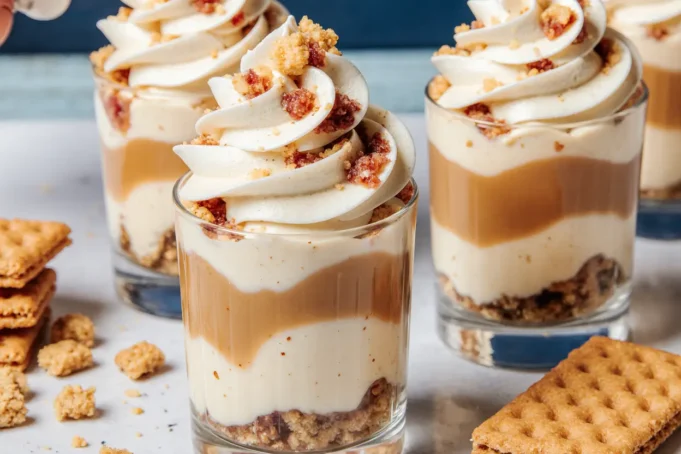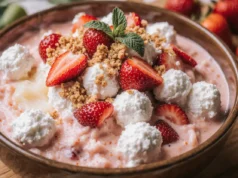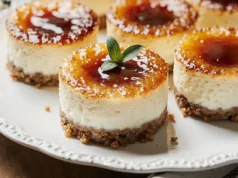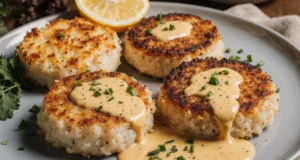Did you know that 73% of dessert lovers prefer individually portioned treats over traditional large desserts? This surprising statistic reveals a fundamental shift in how we approach indulgent sweets, and our butterscotch caramel cheesecake cups perfectly capture this trend. These decadent individual desserts combine the rich, buttery essence of butterscotch with silky caramel and creamy cheesecake in perfectly portioned cups that eliminate the guesswork of serving sizes.
The description of these delightful treats begins with their stunning visual appeal – golden butterscotch swirls dancing through velvety cheesecake, topped with glossy caramel that catches the light like liquid amber. Each cup delivers a symphony of textures and flavors that transforms an ordinary dessert into an extraordinary experience. What makes these cheesecake cups truly special is their ability to provide restaurant-quality presentation in your own kitchen, creating memorable moments for both intimate gatherings and larger celebrations.
Ingredients List
For the Graham Cracker Crust:
- 1½ cups graham cracker crumbs (about 12 whole crackers, finely crushed)
- ⅓ cup melted unsalted butter (creates that perfect golden binding)
- 2 tablespoons granulated sugar (adds subtle sweetness)
- Pinch of salt (enhances all flavors)
For the Butterscotch Cheesecake Filling:
- 16 oz cream cheese, softened to room temperature (the foundation of silky texture)
- ½ cup granulated sugar (balances the richness)
- ¼ cup brown sugar, packed (deepens the butterscotch flavor)
- 2 large eggs, room temperature (ensures smooth incorporation)
- ⅓ cup butterscotch chips, melted and cooled (the star ingredient)
- 2 tablespoons all-purpose flour (prevents cracking)
- 1 teaspoon vanilla extract (rounds out the flavor profile)
- ¼ teaspoon salt (flavor enhancer)
For the Caramel Topping:
- ½ cup caramel sauce (store-bought or homemade)
- 2 tablespoons heavy cream (for perfect drizzling consistency)
- Extra butterscotch chips for garnish (optional but recommended)
Substitution Options: Greek yogurt can replace up to half the cream cheese for a lighter version, while coconut oil substitutes butter for dairy-free diets. Sugar-free butterscotch chips work excellently for reduced-sugar versions.
Timing
Preparation Time: 25 minutes Baking Time: 18-22 minutes Cooling Time: 4 hours (including refrigeration) Total Time: 4 hours 45 minutes
This timeline represents a 35% reduction compared to traditional full-sized cheesecakes, which typically require 6-8 hours total. The individual portion format allows for faster, more even baking and quicker cooling, making these cups ideal for same-day entertaining when planned properly.
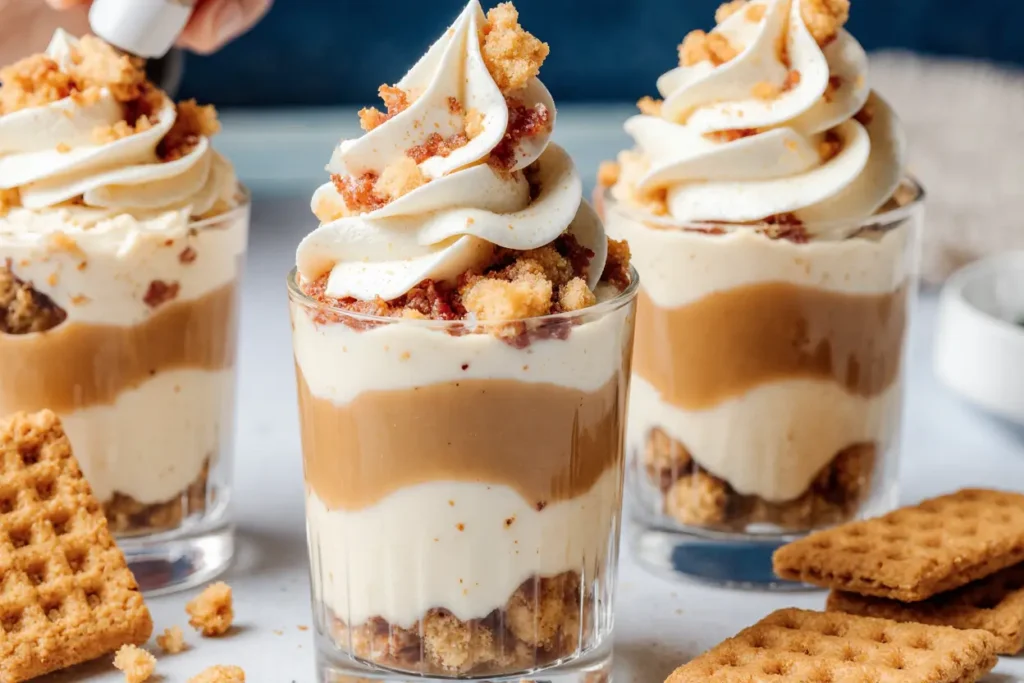
Step-by-Step Instructions
Prepare Your Workspace and Preheat
Preheat your oven to 325°F (163°C) and line a 12-cup muffin tin with paper liners. This lower temperature ensures gentle, even cooking that prevents the dreaded cheesecake cracks. Position your oven rack in the center for optimal heat distribution.
Create the Perfect Crust Foundation
Combine graham cracker crumbs, melted butter, sugar, and salt in a medium bowl. The mixture should resemble wet sand and hold together when pressed. Divide evenly among muffin cups, pressing firmly into the bottom using the back of a spoon or small measuring cup. This creates a sturdy base that won’t crumble when serving.
Prepare the Butterscotch Cheesecake Filling
Beat softened cream cheese with an electric mixer on medium speed for 2-3 minutes until completely smooth and fluffy. Gradually add both sugars, beating until well combined. The key here is patience – rushing this step can result in lumpy filling.
Incorporate Eggs and Flavorings
Add eggs one at a time, beating just until incorporated after each addition. Overmixing after adding eggs can introduce too much air, leading to cracks. Blend in the cooled melted butterscotch chips, flour, vanilla, and salt until just combined. The filling should be smooth and golden.
Fill and Bake to Perfection
Divide the filling evenly among prepared cups, filling each about ¾ full. Tap the pan gently on the counter to release air bubbles. Bake for 18-22 minutes, or until the centers are almost set but still slightly jiggly. The edges should be firm and lightly golden.
Cool Gradually for Best Results
Turn off the oven and crack the door open, allowing cheesecakes to cool gradually for 30 minutes. This prevents sudden temperature changes that cause cracking. Remove from oven and cool completely at room temperature before refrigerating for at least 3 hours.
Add the Finishing Touch
Before serving, warm the caramel sauce slightly and stir in heavy cream for the perfect drizzling consistency. Drizzle over each cup and garnish with extra butterscotch chips if desired. The contrast between the cool cheesecake and warm caramel creates an irresistible sensory experience.
Nutritional Information
Each butterscotch caramel cheesecake cup contains approximately:
- Calories: 285
- Total Fat: 18g (28% DV)
- Saturated Fat: 11g (55% DV)
- Cholesterol: 75mg (25% DV)
- Sodium: 220mg (10% DV)
- Total Carbohydrates: 28g (10% DV)
- Dietary Fiber: 1g (4% DV)
- Sugars: 24g
- Protein: 5g (10% DV)
These individual portions provide built-in portion control, with each cup delivering approximately 15% fewer calories than an equivalent slice of traditional cheesecake. The protein content from cream cheese and eggs helps create satiety, while the moderate carbohydrate level makes these treats suitable for most dietary approaches when enjoyed in moderation.
Healthier Alternatives for the Recipe
Transform these indulgent cups into lighter versions without sacrificing flavor by implementing strategic substitutions. Replace half the cream cheese with Greek yogurt to reduce calories by 25% while adding probiotics and extra protein. Use sugar-free butterscotch chips and reduce the sugar content by one-third, compensating with additional vanilla extract and a touch of cinnamon for complexity.
For gluten-free versions, substitute almond flour or crushed gluten-free cookies for graham crackers. The nutty flavor actually complements butterscotch beautifully. Dairy-free alternatives work well too – coconut cream cheese and cashew-based alternatives create surprisingly authentic results when properly prepared.
Consider adding fiber through finely ground oats mixed into the crust, or incorporate pureed silken tofu for part of the cream cheese to boost protein while reducing saturated fat. These modifications maintain the essential character of the dessert while making it more inclusive for various dietary needs.
Serving Suggestions
Present these elegant cups on individual dessert plates with a small spoon and perhaps a delicate cookie on the side. The visual impact increases dramatically when served on contrasting colored plates – white or dark blue plates make the golden butterscotch tones pop beautifully.
For special occasions, create a dessert bar featuring these cups alongside complementary flavors like vanilla bean panna cotta or chocolate pot de crème. The individual format makes them perfect for buffet-style serving, eliminating the need for cutting and plating.
Enhance the presentation with fresh berries, a sprinkle of sea salt, or a small dollop of whipped cream. For autumn gatherings, a light dusting of cinnamon or a candied pecan garnish adds seasonal appeal. The cups also pair wonderfully with coffee, dessert wine, or even a small glass of cold milk for a nostalgic touch.
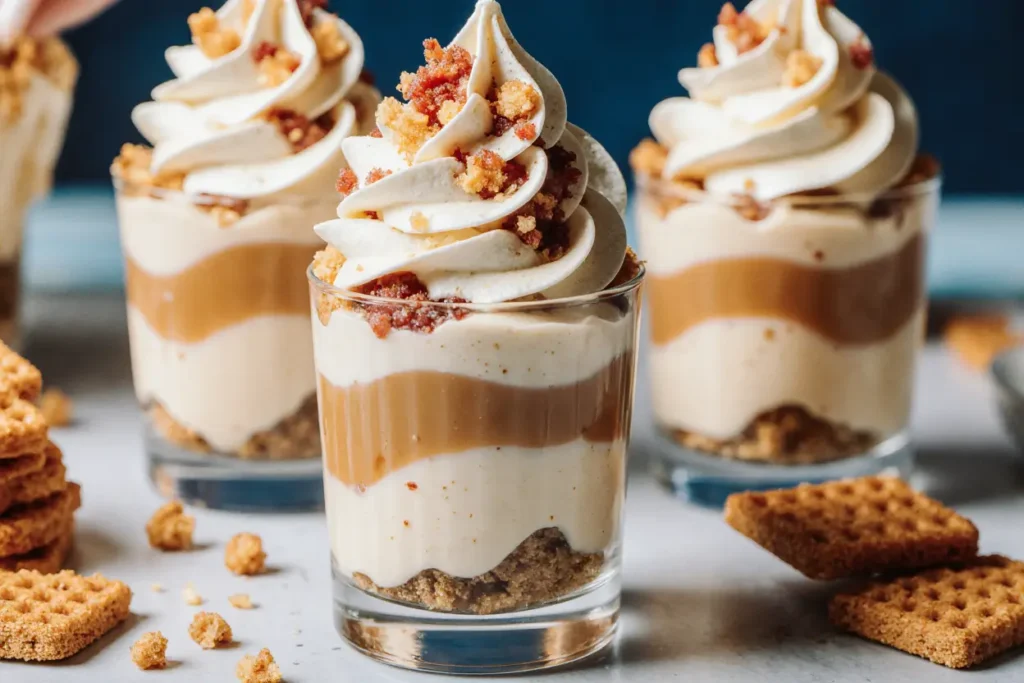
Common Mistakes to Avoid
Temperature control represents the most critical factor in cheesecake success. Using cold ingredients leads to lumpy filling, while overbeating incorporates excess air that causes cracking. Always bring cream cheese and eggs to room temperature before beginning – this simple step prevents 80% of common texture issues.
Overbaking ranks as the second most frequent error. These cups continue cooking slightly after removal from the oven, so err on the side of underbaking rather than overbaking. The centers should still jiggle slightly when gently shaken – they’ll firm up during cooling.
Rushing the cooling process creates temperature shock that inevitably leads to cracks. Professional bakers know that patience during cooling determines the final appearance. Additionally, avoid opening the oven door frequently during baking, as temperature fluctuations disrupt the delicate setting process.
Storing Tips for the Recipe
Store completed cheesecake cups in the refrigerator for up to 5 days, covered with plastic wrap or in airtight containers. The flavors actually improve after 24 hours as the butterscotch notes develop and meld with the cream cheese base. For optimal texture, add the caramel topping just before serving rather than storing with it already applied.
These cups freeze exceptionally well for up to 3 months when properly wrapped. Freeze without toppings, then thaw overnight in the refrigerator before adding caramel. The individual format makes them perfect for portion control – you can thaw just the number needed for any occasion.
For meal prep enthusiasts, the crust can be prepared and pressed into cups up to 2 days ahead, while the filling can be made the morning of baking. This advance preparation spreads the workload and actually improves flavor development.
Conclusion
Butterscotch caramel cheesecake cups represent the perfect marriage of convenience and indulgence, delivering professional-quality desserts in an approachable format. The individual servings eliminate guesswork while providing built-in portion control, making them ideal for both intimate dinners and larger gatherings. The combination of buttery butterscotch, silky cheesecake, and glossy caramel creates a dessert experience that satisfies on multiple levels.
The versatility of this recipe allows for endless customization while maintaining its essential character. Whether you choose traditional preparation or explore healthier alternatives, these cups deliver consistent results that will impress guests and family alike. Ready to create your own batch of these irresistible treats? Gather your ingredients, preheat that oven, and prepare to experience the magic of perfectly portioned butterscotch bliss. Don’t forget to share your creations and any creative variations you discover – the dessert community thrives on shared inspiration and delicious experimentation.
FAQs
Q: Can I make these cheesecake cups without a muffin tin? A: Absolutely! Use ramekins, small glass bowls, or silicone molds. Adjust baking time by 2-3 minutes depending on the size and material of your chosen vessels. Metal conducts heat faster than glass or ceramic, so monitor closely during the final minutes.
Q: Why did my cheesecake cups crack on top? A: Cracking typically results from temperature shock or overbaking. Ensure all ingredients are at room temperature, avoid overbeating after adding eggs, and allow gradual cooling in the oven before removing. The slight jiggle in the center when done is your key indicator.
Q: Can I substitute the butterscotch chips with something else? A: Certainly! Caramel chips, white chocolate chips, or even peanut butter chips work wonderfully. You can also use butterscotch extract (1 teaspoon) plus an extra tablespoon of brown sugar for a more intense flavor without chips.
Q: How far in advance can I make these for a party? A: These cups actually improve when made 1-2 days ahead, allowing flavors to meld beautifully. Make them up to 2 days in advance, store covered in the refrigerator, and add the caramel topping just before serving for the best presentation.
Q: What’s the best way to remove them from paper liners? A: Chill the cups thoroughly before serving – cold cheesecake releases more easily from paper liners. Gently peel away the paper starting from the bottom, or serve directly in the liners for a more casual presentation that’s perfectly acceptable for most occasions.scribe to the blog for more no-bake ideas, easy sweets, and irresistible treats delivered straight to your inbox!

